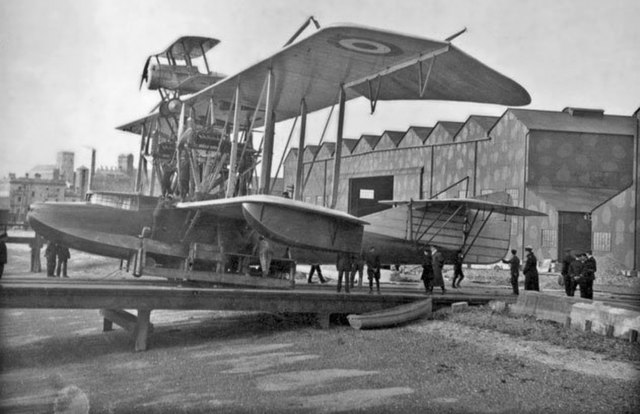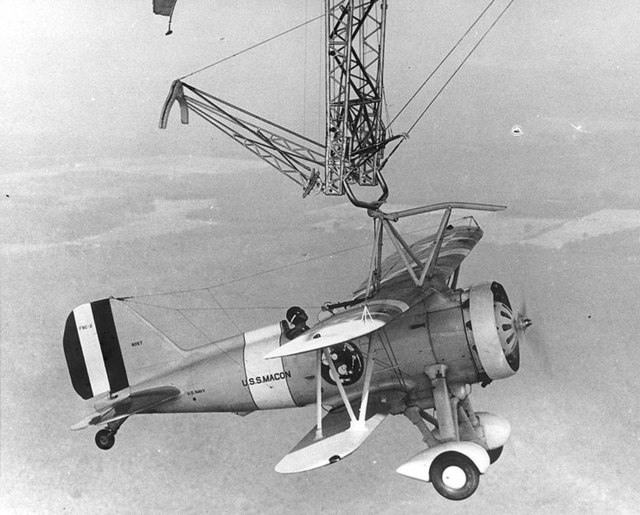Zveno was a parasite aircraft developed in the Soviet Union during the 1930s. It was the brainchild of the aviation engineer Vladimir Vakhmistrov. It consisted of a Tupolev TB-1 or a Tupolev TB-3 heavy bomber mothership and two to five fighters. Depending on the variant, the fighters either launched with the mothership or docked in flight, and they could refuel from the bomber. The definitive Zveno-SPB using a TB-3 and two Polikarpov I-16s, each armed with two 250 kg (550 lb) bombs, was used operationally as a strategic weapon system with good results against targets in Romania during the opening stages of the German-Soviet War. The same squadron later carried out an attack against a bridge on the River Dnieper that had been captured by German forces.
Zveno-2: Tupolev TB-3 and three Polikarpov I-5. Also visible is the ramp for loading the fighters. The centerline aircraft was hoisted on top of the fuselage by hand.
TB-3 docking with a Grigorovich I-Z under the fuselage.
Zveno-SPB: TB-3-4M-34FRN with two Polikarpov I-16s armed with FAB-250 bombs
A parasite aircraft is a component of a composite aircraft which is carried aloft and air launched by a larger carrier aircraft or mother ship to support the primary mission of the carrier. The carrier craft may or may not be able to later recover the parasite during flight.
An F-84 Thunderjet hooked on a FICON trapeze beneath its mother ship
Bristol Scout on Porte Baby
A Sopwith 2F.1 Camel secured under the British HM Airship 23r
A Curtiss F9C Sparrowhawk attached by a "skyhook" to USS Macon.






